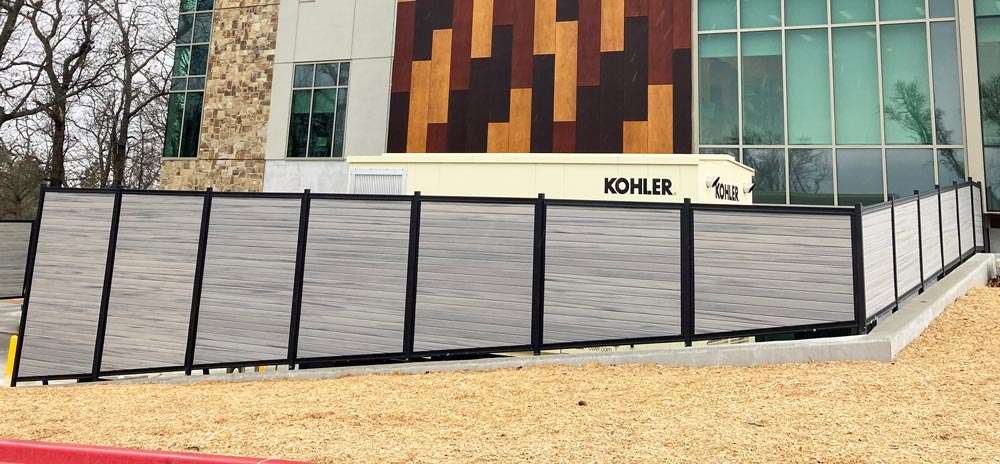All Categories
Featured

When you determine to set up a brand-new fence, recognizing the timeline for completion is vital to stay clear of any type of surprises. The time it takes to finish a fence installation can vary based upon several factors, such as the kind of product used, the complexity of the design, the size of the area to be fenced, and the condition of the website. Below, we will break down what affects the timeline and offer you an estimated duration for different fencing types.
- Type of Fence Material. The product you pick plays a substantial role in just how long the installment process will take. Right here are the most common sorts of fencing materials and their setup times:
Wood Fences: Standard timber fencings usually take longer to mount, especially if they are customized on-site. Anticipate the setup to take between 2 and 4 days, relying on the dimension and layout of the fence. Extra complex wood fences with included information (like decorative posts or custom-made layouts) might take also much longer.
Plastic Fences: Plastic fences are pre-made in panels, which enables quicker installation. Normally, a plastic fencing can be mounted in 1 to 2 days, relying on the size of the location being fenced.
Chain Link Fences: Chain link fences are reasonably straightforward to install and can usually be finished in 1 to 2 days. The products come pre-fabricated, making the installment procedure much faster and more simple.
Aluminum/Wrought Iron Fences: These products usually require even more precision and can entail welding or putting together components. Aluminum or wrought iron fences take around 2 to 4 days to mount depending on the intricacy and size.
Composite Fences: Composite fencings, which incorporate wood and plastic, supply the look of wood with the durability of plastic. These fencings additionally come in pre-made panels, so installation can be carried out in 2 to 3 days.
- Size and Intricacy of the Project. Larger properties will normally take more time to install a fencing, particularly if the area is unequal or calls for extensive website prep work. A small yard fencing may only take a day or more to set up, but a big home or commercial fencing may take a number of days to a week, especially if there are additional features such as entrances, ornamental layouts, or if the land is tough to collaborate with.
- Website Preparation. The problem of the site can substantially impact the moment it requires to set up a fencing. If the land is uneven, rocky, or heavily wooded, additional time will certainly be needed for removing debris or preparing the ground. The elimination of an old fencing or any kind of obstacles, such as trees or big rocks, can add a day or even more to the task.

- Weather. Weather condition plays a significant function in the period of a fencing installation. Rainfall, snow, or extreme warmth can delay job, especially when excavating openings for articles or establishing the structure for the fencing.
- Authorizations and Rules. Prior to installation starts, consult neighborhood authorities to see if you require a permit for your fencing installment. Authorizations can take anywhere from a couple of days to a few weeks to process, and if your fence lies near residential property lines, you may require authorization from next-door neighbors or your property owners' organization. This documentation can include time to your installation job, so be certain to plan as necessary.
Average Time for Installation. Based on the factors provided above, here are the common time structures for fence setups:
Tiny Residential Fencing (under 100 feet): 1 to 2 days. Tool Residential Fence (100 to 300 feet): 2 to 4 days. Large Residential or Commercial Fencing (300+ feet): 4 to 7 days. Verdict. Typically, a straightforward household fencing installation takes between 1 to 4 days. Larger, extra complicated jobs might require up to a week, especially if extensive website prep work or multiple materials are entailed. To obtain a much more accurate timeline, it's important to speak with your fence contractor and review the specific information of your job, including materials, website problems, and any potential delays. By recognizing these factors ahead of time, you can make sure a smooth, prompt fencing setup procedure.
Latest Posts
Expert Automotive Services at Montclare Auto Repair - Schedule Now!
Published Apr 20, 25
2 min read
Specials & Discounts: Score Great Offers on Car Repairs at Montclare Auto Repair
Published Apr 20, 25
2 min read
Change Your Home with Durable Hardwood Flooring from Carpet Interiors Floor & Home
Published Apr 19, 25
1 min read
More
Latest Posts
Expert Automotive Services at Montclare Auto Repair - Schedule Now!
Published Apr 20, 25
2 min read
Specials & Discounts: Score Great Offers on Car Repairs at Montclare Auto Repair
Published Apr 20, 25
2 min read
Change Your Home with Durable Hardwood Flooring from Carpet Interiors Floor & Home
Published Apr 19, 25
1 min read